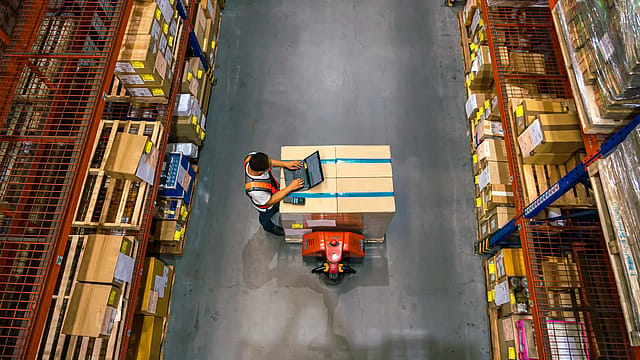Uniform logistics platform can leapfrog India’s growth story, say key stakeholders
ADVERTISEMENT

Finance minister Nirmala Sitharaman in Budget 2022-2023 has announced the integration of postal and railway networks to facilitate easier movement of parcels. She also announced a scheme called ‘one station one product’ as well as a logistics interface platform allowing data exchange among all mode operators. These announcements led to an increase in stock prices of logistics companies by close to 7% on Tuesday. Supply chain and social commerce companies believe that these initiatives could be a game-changer if the government walks the talk.
So how would an initiative such as ‘one station one product’ help businesses? Vamsi Udayagiri, founder and CEO at Hesa Technologies, says, ‘one station one product’ is an extension of NABARD’s ‘one district one product’ initiative. “As per this programme every district picked up a crop which they called as their flagship crop and thereby incentivised the farmers of that region to produce more of that crop,” explains Udayagiri. Groundnut for instance is the flagship crop of the Jajpur district in Odisha, and Hesa has been partnering with local self-help groups to convert the groundnut into cold pressed oil and distribute it in other markets. “An initiative like one station one product would make logistics much simpler for rural entrepreneurs. The farmer/producer needn’t worry about logistics. He can leave the products at the post office, which along with the railways would take care of last mile delivery,” he further explains.
The emergence of a host of agri-tech platforms have made the average Indian farmers/rural entrepreneurs tech-savvy, says Madan Padaki, CEO and founder of rural distribution company, 1Bridge. “They are able to discover products and sell digitally, they are also getting comfortable with online payments, but fulfilment is a challenge. The product has to leave on time and reach the destination on time and that is an expensive proposition.” Logistics contribute over 10% of the cost of a product and with demand generation in rural areas not that high both brands as well as entrepreneurs find it expensive to ship products. Padaki agrees with Hesa’s Udayagiri, that the ‘one station one product’ initiative would help reduce logistics costs substantially as well as help in demand generation. “As a distribution company, I can link the farmer/producer beyond his district and help generate more demand. It will be a win-win for me as well as the farmer/producer,” says Padaki.
January 2026
Netflix, which has been in India for a decade, has successfully struck a balance between high-class premium content and pricing that attracts a range of customers. Find out how the U.S. streaming giant evolved in India, plus an exclusive interview with CEO Ted Sarandos. Also read about the Best Investments for 2026, and how rising growth and easing inflation will come in handy for finance minister Nirmala Sitharaman as she prepares Budget 2026.
“Today, we are generating demand, but logistics costs don’t make sense. Now that will get reduced and will be able to generate more demand,” adds Udayagiri.
Ajaita Shah, founder of social commerce company Frontier Markets, says the ‘one station one product’ initiative will help to reduce dependence on urban warehousing. “It will help local businesses socialise their products and access supply chains to sell locally.”
At the heart of these initiatives would be the unified logistics interface platform (ULIP). According to Amit Sharma, founder, Shop X, movement of goods is the biggest challenge in India’s logistics ecosystem. India, says Sharma, incurs the highest logistic cost (14%) in the world as a percentage of GDP in comparison to the likes of US and Germany (8%-9%).
“While payment information has a good digital footprint across players, supply chain information is very unstructured and non-standard. A warehousing system doesn’t talk to the line haul between cities, and the line haul doesn’t talk to the last mile distributor. A unified logistics interface platform is a great step in converting India into a data rich logistics country,” says Sharma. “It will make distribution seamless, there will be real time trackability, and the stakeholders will even be able to do predictive analysis as to when the product would reach them. This will help them to plan last mile delivery better,” he adds.
Padaki of 1Bridge explains the benefit of a unified logistics platform with an example. He says that he works with a coconut farmer in Tumkur (Karnataka) to ship his produce to Srikakulam in Andhra. The produce is first shipped to Bangalore and from there it goes to Vishakapatnam and finally to Srikakulam. The producer does this four days a week in order to make sure that the buyer in Srikakulam gets a fresh product. “If an integrated system starts working, we can track where the product is, there will be visibility on supply and it will increase the confidence of the buyer.”
A higher degree of transparency would lead to more demand and better incomes and more consumption. But unifying road networks, railways and waterways will be a complex process and it could take a while for the unified logistics platform to take off.
